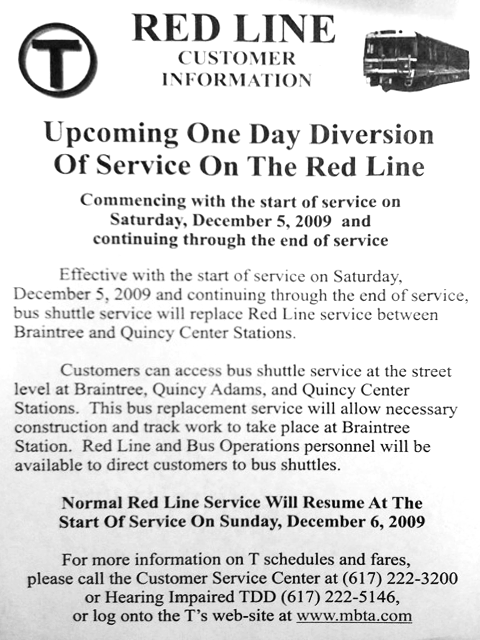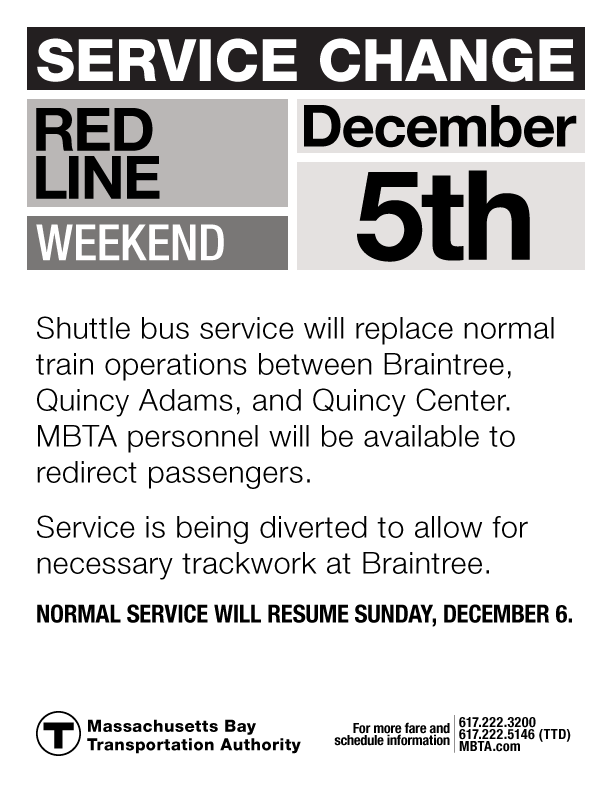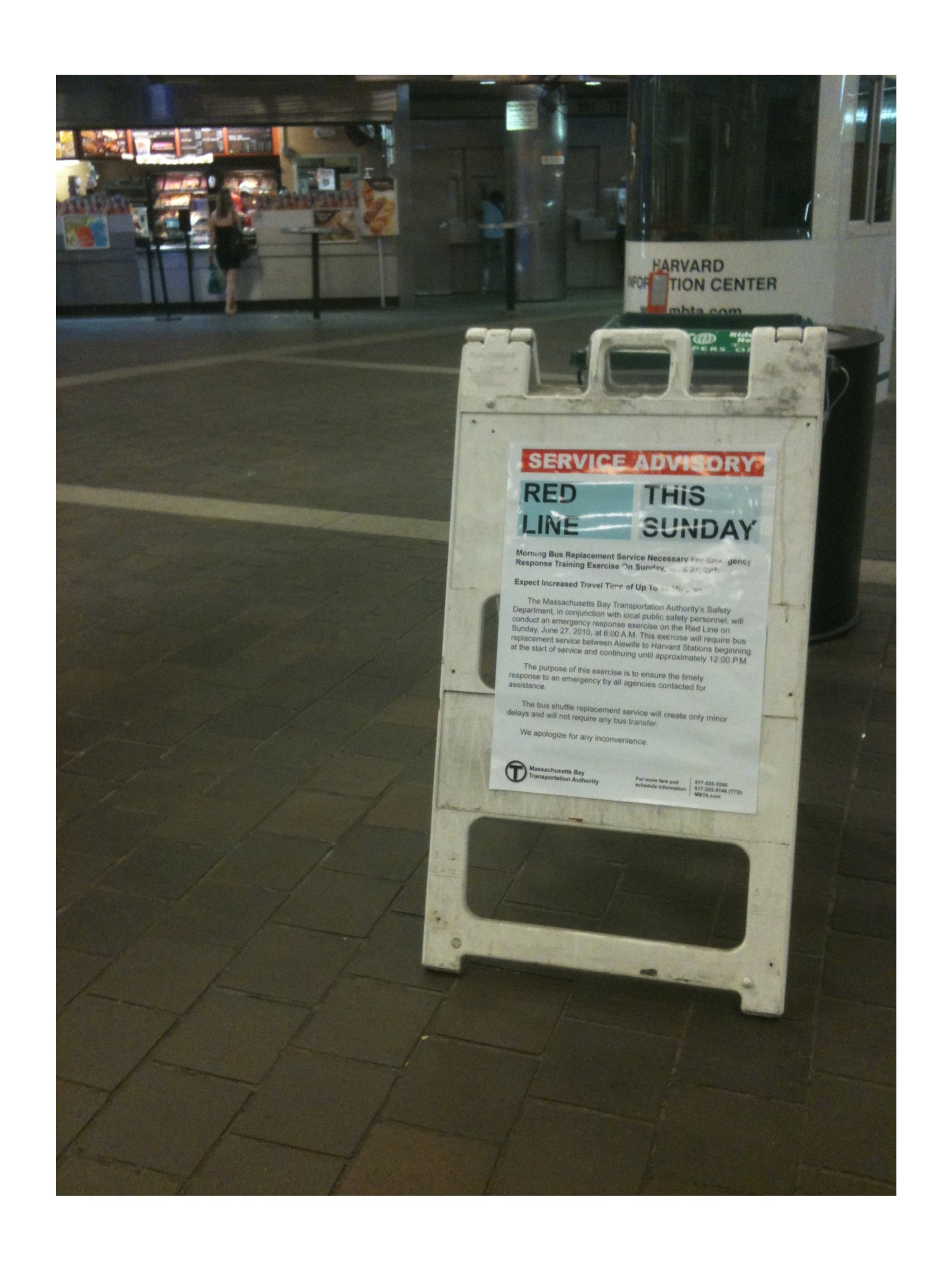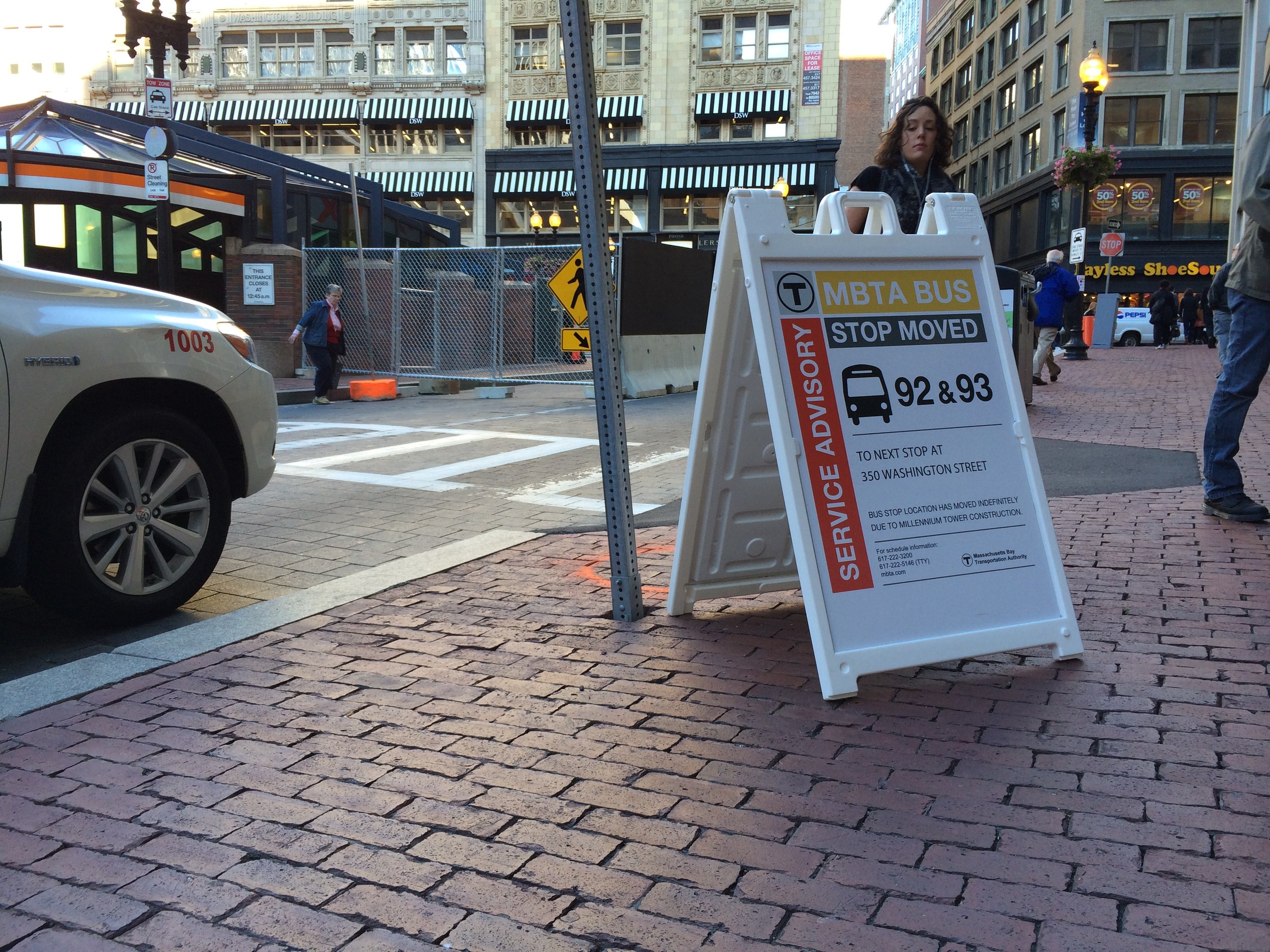Celebrating 10 Years Of Advocacy: TransitMatters' Guerrilla Poster Campaign
For the next 6 weeks, we will be highlighting landmark moments in our organization’s history so far. First up: Our guerrilla diversion poster campaign, which inspired the T’s current diversion signage.
In December 2009, our founder, Marc Ebuña, came across a Red Line service advisory lying face-down on the floor. This advisory was from a "seat drop," which was one of the ways the T used to communicate with riders about service advisories. Seat drops were not effective. They often ended up on the floor, content side down. Seat drops could not communicate a message to an entire train car, let alone every rider.
The Red Line service advisory Marc found was poorly designed and written more like a press release than an alert. It had too much text, few visual cues highlighting the most important information, and poor branding, making it look unofficial.
We redesigned it, taking a page from the New York City Subway’s advisories at the time. We pulled key information into a high-contrast header, edited down the text significantly, and added the T’s official branding with contact information.
Our redesign posted above a service advisory from the T.
We offered the redesign to the MBTA and received a prompt response from the Deputy Director of Subway Operations. He referred us to the Red Line Chief of Operations, to follow up on design issues. We never got that follow-up.
In March of 2010, the Director of Innovation and Special Projects at MassDOT reached out via the MassDOT Developers Twitter account to invite us to a stakeholder roundtable with the incoming MBTA General Manager, Rich Davey. Here, we mentioned to the incoming General Manager our previous attempts to improve service advisories with staff. He encouraged us to post our designs the next time we saw diversion posters.
Early May 2010, we posted the redesigns. This seemed to push through the internal inertia required to get this prioritized. By mid-June 2010, the T was officially starting to pilot the new signs! Designs continued to evolve internally after then.






